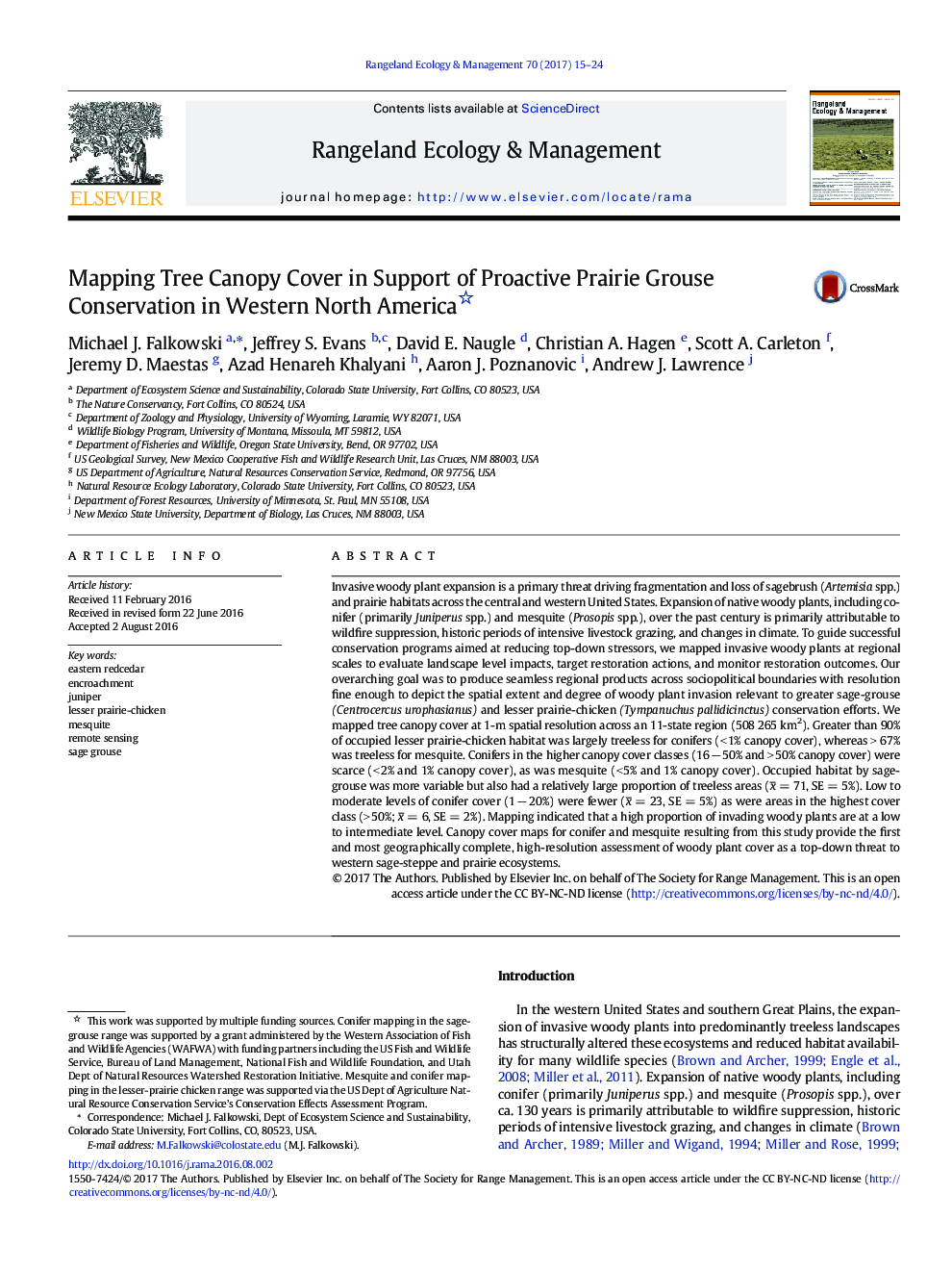| کد مقاله | کد نشریه | سال انتشار | مقاله انگلیسی | نسخه تمام متن |
|---|---|---|---|---|
| 5745295 | 1412393 | 2017 | 10 صفحه PDF | دانلود رایگان |

Invasive woody plant expansion is a primary threat driving fragmentation and loss of sagebrush (Artemisia spp.) and prairie habitats across the central and western United States. Expansion of native woody plants, including conifer (primarily Juniperus spp.) and mesquite (Prosopis spp.), over the past century is primarily attributable to wildfire suppression, historic periods of intensive livestock grazing, and changes in climate. To guide successful conservation programs aimed at reducing top-down stressors, we mapped invasive woody plants at regional scales to evaluate landscape level impacts, target restoration actions, and monitor restoration outcomes. Our overarching goal was to produce seamless regional products across sociopolitical boundaries with resolution fine enough to depict the spatial extent and degree of woody plant invasion relevant to greater sage-grouse (Centrocercus urophasianus) and lesser prairie-chicken (Tympanuchus pallidicinctus) conservation efforts. We mapped tree canopy cover at 1-m spatial resolution across an 11-state region (508 265 km2). Greater than 90% of occupied lesser prairie-chicken habitat was largely treeless for conifers (< 1% canopy cover), whereas > 67% was treeless for mesquite. Conifers in the higher canopy cover classes (16 â 50% and > 50% canopy cover) were scarce (< 2% and 1% canopy cover), as was mesquite (< 5% and 1% canopy cover). Occupied habitat by sage-grouse was more variable but also had a relatively large proportion of treeless areas (xâ = 71, SE = 5%). Low to moderate levels of conifer cover (1 â 20%) were fewer (xâ = 23, SE = 5%) as were areas in the highest cover class (> 50%; xâ = 6, SE = 2%). Mapping indicated that a high proportion of invading woody plants are at a low to intermediate level. Canopy cover maps for conifer and mesquite resulting from this study provide the first and most geographically complete, high-resolution assessment of woody plant cover as a top-down threat to western sage-steppe and prairie ecosystems.
Journal: Rangeland Ecology & Management - Volume 70, Issue 1, January 2017, Pages 15-24